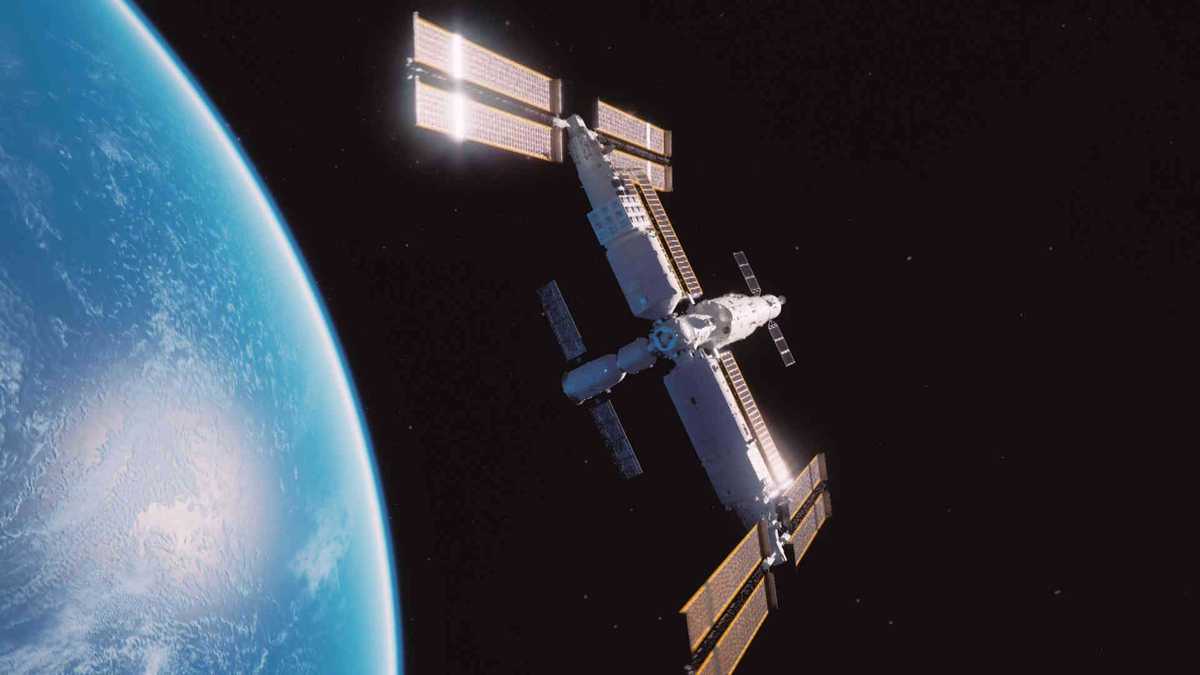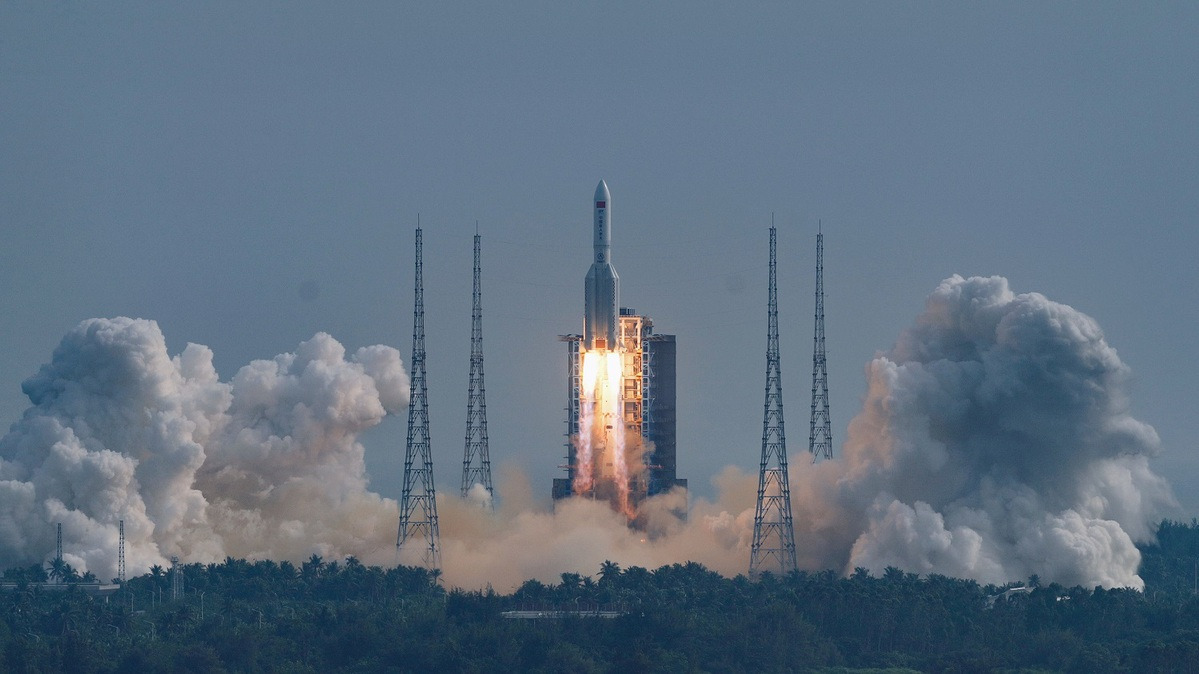
The Tiangong Space Station is shown after docking with the Mengtian lab module in this artist's drawing. (Photo/China Daily)
Space lab: Experiments set to achieve world-class findings
China's Mengtian space lab module, the third major component of the nation's Tiangong space station, was launched on Monday afternoon in a key step to complete the in-orbit assembly of Tiangong.
The lab module's carrier — a Long March 5B heavy-lift rocket — blasted off at 3:37 pm from the Wenchang Space Launch Center in the southernmost island province of Hainan.
After flying more than eight minutes, the rocket placed the spacecraft into a low-Earth orbit nearly 400 kilometers above the ground.
Mengtian, the world's largest single-body spacecraft now in active service, was then scheduled to rendezvous and dock with the Tiangong station's Tianhe core module, according to the China Manned Space Agency.
The three crew members of the Shenzhou XIV mission, who have been staying in Tiangong for nearly five months, were ready for Mengtian's arrival, the agency said in a news release.
Mengtian was transported to the Wenchang Space Launch Center by ship in early August. It underwent function and prelaunch checks over the past three months at the launch center. The craft received fuel earlier this month at the center.
The lab module is about 17.9 meters long, has a diameter of 4.2 meters and weighs more than 23 metric tons. It has 32 cubic meters of internal space that can be used by the astronauts, according to its designers at the Shanghai Academy of Spaceflight Technology.
Gan Keli, Mengtian's project manager at the Shanghai academy, said that the spacecraft consists of four sections — a crew working compartment, a payload section, an airlock cabin and a service module.
"There are 13 scientific cabinets inside the craft to hold scientific equipment. It also carries 37 extravehicular payload adapters capable of carrying scientific experiments that need to be exposed to the space environment, cosmic rays, a vacuum and solar winds," Gan said.
Gan noted that scientific equipment onboard will be used for microgravity studies and to carry out experiments in fluid physics, materials science, combustion science and fundamental physics.

China's Mengtian space lab module is launched at the Wenchang Space Launch Center in the southernmost island province of Hainan on Monday. (Su Dong/China Daily)
A major technical feature of Mengtian is that it can move scientific apparatus out of the Tiangong station without being handled by the astronauts, to conduct extravehicular experiments and bring them back inside the station after experiments, according to the designer.
Moreover, the lab module is capable of deploying miniature spacecraft such as CubeSats into orbit, he added.
Liu Guoning, deputy chief designer of the scientific cabinet system at the Chinese Academy of Sciences' Technology and Engineering Center for Space Utilization, said the scientific experiments to be carried out in Mengtian are expected to enable scientists to conduct cutting-edge studies and achieve world-class findings.
Liu's center is responsible for making and implementing plans and schedules for scientific work on the Tiangong space station.
The results of the experiments can also boost the application and transfer of advanced space science and technology to other research fields, Liu said.
"So far, we have arranged about 40 experiments in those eight cabinets and will gradually carry them out in accordance with the overall plan," he said.
Liu said three experiments that will take place in Mengtian will involve cooperation with researchers from the European Space Agency, and these will help to increase the status of the Tiangong station in the international science community.
"The Tiangong station will be our country's largest space-based platform for science and technology in the coming decade. We are determined to make full use of the asset to obtain breakthroughs in science and technology and to generate comprehensive benefits," he said.
Wentian, the Tiangong station's first lab module, was launched on July 24 on a Long March 5B rocket from the Wenchang center.
Tiangong is currently composed of four sections: the Tianhe core module, the Wentian lab, the Tianzhou 4 cargo ship and the Shenzhou XIV spacecraft.
After Mengtian is connected with the Tiangong, the station will form a T-shaped structure and astronauts will have as much as 110 cubic meters of usable space.
After the labs, the Tianzhou 5 cargo craft and the Shenzhou XV crew are scheduled to arrive at the massive orbiting outpost around the end of this year.
Monday's launch mission marked the 446th flight of the Long March rocket family and the country's 47th space mission this year. China plans to undertake more than 60 rocket launches in 2022.
Author: Zhao Lei
Editor: Tan Qikuan, Qian Yingchao (Intern)




